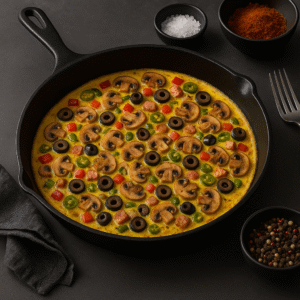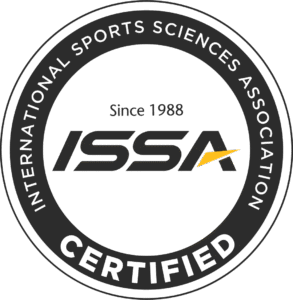Gluten-Free Diet
What is Gluten-Free
A gluten-free diet is a dietary approach that excludes foods containing gluten, a protein found in wheat, barley, rye, and their derivatives. The primary purpose of a gluten-free diet is to manage celiac disease, an autoimmune disorder characterized by an adverse reaction to gluten in the small intestine. However, individuals with gluten sensitivity or wheat allergies may also benefit from avoiding gluten-containing foods.
Here are some key points of the gluten-free diet:

- Foods to Avoid: Individuals following a gluten-free diet must eliminate all sources of gluten from their meals and snacks. This includes wheat-based products like bread, pasta, cereals, baked goods, and certain sauces and condiments. Barley, rye, and their derivatives, such as malt and malt vinegar, also contain gluten and should be avoided.
- Gluten-Free Alternatives: Many gluten-free alternatives are available for individuals on a gluten-free diet. These include naturally gluten-free grains like rice, corn, quinoa, millet, and sorghum, as well as gluten-free flours made from almonds, coconut, tapioca, and chickpeas. Additionally, there are numerous gluten-free versions of bread, pasta, and baked goods made from alternative flours.
- Fresh Fruits and Vegetables: Fresh fruits and vegetables are naturally gluten-free and can be included liberally in a gluten-free diet. They provide essential vitamins, minerals, antioxidants, and fiber to support overall health and well-being.
- Protein Sources: Protein-rich foods such as lean meats, poultry, fish, eggs, legumes, nuts, and seeds are naturally gluten-free and can be included in a gluten-free diet. However, it’s important to check labels and avoid processed meats and meat products that may contain hidden sources of gluten.
- Processed Foods and Cross-Contamination: Individuals on a gluten-free diet should be cautious when consuming processed foods, as they may contain hidden sources of gluten in the form of additives, flavorings, or stabilizers. Cross-contamination can also occur if gluten-free foods come into contact with gluten-containing foods during storage, preparation, or cooking.
- Label Reading and Ingredient Awareness: It’s essential for individuals on a gluten-free diet to become proficient at reading food labels and identifying ingredients that may contain gluten or gluten derivatives. Many food manufacturers now label their products as “gluten-free” to help consumers make informed choices.
- Dining Out: When dining out, individuals on a gluten-free diet should communicate their dietary needs to restaurant staff and inquire about gluten-free menu options. Some restaurants offer dedicated gluten-free menus or can accommodate special dietary requests.
- Consultation with Healthcare Professionals: If you suspect you have celiac disease, gluten sensitivity, or wheat allergy, it’s important to consult with a healthcare professional, such as a gastroenterologist or registered dietitian, for proper diagnosis and guidance on managing your condition with a gluten-free diet.
- Overall, a gluten-free diet can be an effective way to manage celiac disease, gluten sensitivity, or wheat allergy and promote overall health and well-being for individuals with these conditions. However, it’s essential to ensure nutritional adequacy and dietary balance while following a gluten-free eating plan.

Overall, a gluten-free diet can be an effective way to manage celiac disease, gluten sensitivity, or wheat allergy and promote overall health and well-being for individuals with these conditions. However, it’s essential to ensure nutritional adequacy and dietary balance while following a gluten-free eating plan.
What is Celiac Disease?
Celiac disease is a chronic autoimmune disorder characterized by an adverse reaction to gluten, a protein found in wheat, barley, rye, and their derivatives. In individuals with celiac disease, consuming gluten triggers an immune response that damages the lining of the small intestine, leading to inflammation and impaired nutrient absorption. Below is a detailed breakdown of some major points of celiac disease.
In people with celiac disease, the immune system mistakenly targets the small intestine in response to the ingestion of gluten. This immune reaction damages the villi, small finger-like protrusions lining the small intestine, which are responsible for nutrient absorption.
Celiac disease can cause a wide range of symptoms, including gastrointestinal symptoms such as abdominal pain, bloating, diarrhea, constipation, and nausea. Other symptoms may include fatigue, weight loss, anemia, joint pain, skin rash (dermatitis herpetiformis), and neurological symptoms.
Diagnosis of celiac disease involves a combination of blood tests to detect specific antibodies associated with the condition, as well as an intestinal biopsy to assess damage to the lining of the small intestine. It’s essential to continue consuming gluten-containing foods before testing to ensure accurate results.
The primary treatment for celiac disease is strict adherence to a gluten-free diet. Eliminating gluten from the diet allows the small intestine to heal and prevents further damage. Individuals with celiac disease must avoid all sources of gluten, including wheat, barley, rye, and their derivatives.
A gluten-free diet involves consuming naturally gluten-free foods such as fruits, vegetables, lean proteins, dairy products, nuts, seeds, and gluten-free grains like rice, corn, quinoa, and millet. It’s essential for individuals with celiac disease to carefully read food labels and be vigilant about avoiding cross-contamination with gluten-containing foods.
Untreated celiac disease can lead to serious complications, including malnutrition, osteoporosis, infertility, neurological disorders, and an increased risk of certain cancers, such as lymphoma and small intestine adenocarcinoma. However, with proper management and adherence to a gluten-free diet, most individuals with celiac disease can lead healthy and fulfilling lives.
Celiac disease has a strong genetic component, and individuals with a family history of the condition have an increased risk of developing it. However, not everyone with the genetic predisposition will develop celiac disease, and environmental factors may also play a role in its development.

If you suspect you may have celiac disease or gluten sensitivity, it’s important to consult with a healthcare professional, such as a gastroenterologist or registered dietitian, for proper diagnosis and guidance on managing your condition with a gluten-free diet. Early diagnosis and treatment can help prevent complications and improve long-term health outcomes for individuals with celiac disease.
Before starting any new diet or making significant dietary changes, it’s advisable to consult with a healthcare professional or registered dietitian to ensure that the gluten free diet is appropriate for your health status and goals. Additionally, regular monitoring and adjustments may be necessary to optimize the benefits and minimize potential risks associated with the gluten free diet.
Gluten-Free vs. Wheat-Free
"Wheat-free" and "gluten-free" are terms often used interchangeably, but they have distinct meanings:
Gluten-Free
“Gluten-free” means that a product or diet does not contain gluten, a protein found in wheat, barley, rye, and their derivatives. Gluten is responsible for the elastic texture of dough and can cause adverse reactions in people with celiac disease, gluten sensitivity, or wheat allergies.
A gluten-free diet excludes all sources of gluten, including wheat, barley, rye, and their derivatives. This diet is essential for individuals with celiac disease, as even small amounts of gluten can trigger an immune response and damage the small intestine.
Many gluten-free products are naturally wheat-free, but not all wheat-free products are gluten-free. For example, products made with barley or rye may be wheat-free but contain gluten and are not suitable for individuals following a gluten-free diet.
Summary:
In summary, while wheat-free and gluten-free diets both involve avoiding wheat-containing foods, a gluten-free diet is more restrictive as it excludes all sources of gluten, including wheat, barley, rye, and their derivatives. Individuals with celiac disease, gluten sensitivity, or wheat allergies must carefully read food labels and avoid cross-contamination to ensure they are following a safe and appropriate diet.
Wheat-Free
“Wheat-free” means that a product or diet does not contain wheat or wheat derivatives. Wheat is a type of grain that contains gluten, but being wheat-free does not necessarily mean the product is gluten-free. Some examples of wheat and wheat products include wheat flour, wheat germ, wheat bran, and semolina.
People who are allergic to wheat or have wheat sensitivities must avoid wheat-containing foods but may be able to tolerate other gluten-containing grains like barley and rye.

Gluten-Free Diet Must-Knows
Educate Yourself: Learn which foods contain gluten and which are naturally gluten-free. Common sources of gluten include wheat, barley, rye, and their derivatives. Many processed foods, sauces, and condiments may also contain hidden sources of gluten.
Focus on Whole Foods: Emphasize naturally gluten-free foods such as fruits, vegetables, lean proteins, dairy products, nuts, seeds, and gluten-free grains like rice, quinoa, buckwheat, and corn. These foods are nutritious and provide essential vitamins, minerals, and fiber.

Monitor Symptoms: Pay attention to how your body responds to the gluten-free diet. Monitor any changes in symptoms or overall well-being and consult with a healthcare professional if you have concerns or experience persistent symptoms.
Read Labels: Get into the habit of reading food labels carefully to identify gluten-containing ingredients. Look for “gluten-free” labels on packaged foods, but also be aware of potential sources of gluten such as modified food starch, malt flavoring, and hydrolyzed vegetable protein.
Be Cautious with Processed Foods: While there are many gluten-free alternatives available, some processed gluten-free products may be high in sugar, fat, and additives. Choose whole, minimally processed foods whenever possible to support overall health and well-being.
Avoid Cross-Contamination: Prevent cross-contamination by using separate cooking utensils, cutting boards, and kitchen equipment for gluten-free foods. Be mindful of shared surfaces, toaster ovens, and deep fryers that may come into contact with gluten-containing foods.
Be Patient: Adjusting to a gluten-free diet can be challenging at first, but with time and practice, it becomes easier to navigate food choices and meal preparation. Be patient with yourself and seek support from family, friends, or support groups if needed.

Dining Out: When dining out, inform restaurant staff about your dietary restrictions and ask about gluten-free menu options. Be cautious of cross-contamination in restaurant kitchens and inquire about food preparation methods to ensure your meal is gluten-free.











